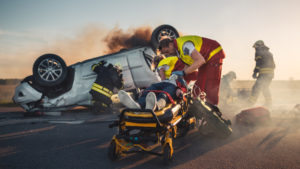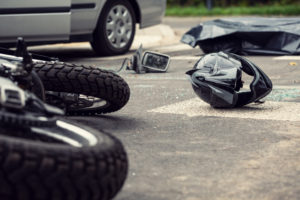With Winter right around the corner, it’s important to get your car prepared for the extreme weather conditions in Michigan. In fact, doing so could save your life or at the very least, save you a lot of hassle later on. Read below for the top ten tips to prepare your car for the winter season…even if you live in a warm climate area but are planning on traveling to a colder state to visit relatives for the holidays, you might want to check these out!
- Get the right kind of oil change. If your car is approaching the 30,000 mile makers, it’s time to get the full-service treatment! Among other things, the service should include an oil change, and the oil used should have the right viscosity, or thickness, for your vehicle at this time of year.
- Make sure you can see. Windshield wipers usually work effectively for about one year, so be sure to invest in some new ones if you’re due. Here’s another important step to take before you find yourself struggling to see in a blinding storm: Fill up your windshield washer reservoir with windshield washer fluid. (Plain water won’t do the trick at this time of year because it freezes.) Also check to see that your heater and defroster are working properly so you can keep the windshield nice and clear.
- Give your battery some TLC. Make sure your battery’s posts and connections are corrosion-free and that your battery has all the water it needs. If your battery is more than three years old, have a certified repair shop test its ability to hold a charge.
- Examine your belts and hoses. When you take your car in for it’s 30,000 mile check-up, have your belts and hoses checked for wear and tear. Cold weather can damage these vital components of your vehicle.
- Check your tire pressure. Make sure your tires are adequately filled for the winter weather–in order to get the best traction in slippery conditions, your tires need to be filled to the tire pressure standards for your vehicle (check your owner’s manual for your car). In addition, the air pressure in your tires has likely dropped as the weather has gotten colder, so it’s important to see where things stand now. (You can generally expect that you’ll lose 1 pound per square inch whenever the temperature drops by 10 degrees Fahrenheit).
- Think about switching to snow tires. If you live in a hilly place or a rural area, you might want to consider getting snow tires on your vehicle to help with traction. When shopping around for snow tires, ask about all the fees that might come into play, such as fees for mounting and balancing–or ask for the "out-the-door" cost .
- Do you have four-wheel drive? Most drivers don’t use their four-wheel drive system in the Summer months. Make sure that you have your system checked to make sure it’s working properly and also teach your entire family how to activate the system and when they should activate the system.
- Get the anti-freeze system just right. Aim for having a 50-50 mix of antifreeze (coolant) and water inside your radiator. This will prevent the mixture from freezing even at ridiculously cold temperatures. Also, it’s easy to test the mixture by purchasing an inexpensive antifreeze tester, which you can purchase at auto parts stores. If the mixture is off, your cooling system should be drained and refilled or flushed. Be sure you’re equipped to dispose of your old antifreeze properly if you do this job yourself.
- Prepare an emergency kit for the winter. God forbid you get stranded on the road, but you will still want to prepare a kit that includes: a blanket, an extra set of boots and gloves, extra water and food including hard candies, warm clothes, an ice scraper, a small shovel, a flashlight, windshield wiper fluid, an extra set of windshield wipers, flares, jumper cables, a tool kit, tire chains, a tire gauge, a spare tire with air in it, tire-changing equipment, a first-aid kit, paper towels, and a bag of abrasive material such as sand or kitty litter to help you get traction under your tires. In addition, try to keep your gas tank as full as possible at all times so that the gas line doesn’t freeze.
- Know what to do if you get stranded. Don’t wander away from your car unless you know where you are and exactly how far away help is. Put on the extra clothes and cover yourself with the blanket. Light two flares and put them in the front and back of the car to call attention to your situation. If you have enough gas in the tank, run the engine and heater for about 10 minutes for each hour you’re waiting for help. Leave at least one window open a little bit so that snow and ice don’t seal the car shut. Suck on a hard candy to prevent your mouth from getting too dry.
Remember these tips and best wishes for safe winter driving!

recently named in the 2009 edition of Best Lawyer's In America, David Mittleman has been representing seriously injured people since 1985. A partner with Church Wyble PC—a division of Grewal Law PLLC—Mr. Mittleman and his partners focus on medical malpractice, wrongful death, car accidents, slip and falls, nursing home injury, pharmacy/pharmacist negligence and disability claims.










One Comment
Harvey McFadden
" I did not think I was going too fast". A common remark from people losing control of front wheel drive vehicles. What the average person and some experts are not aware of is that there can be as high as 950 pounds or more weight on the front axle of their vehicle than the back. So a car that feels like a limousine on the front holds like a golf cart on the back
A 3000lb car with a weight ratio of 65% front weight and 35% rear weight will weigh 1950lb on the front and 1050lb on the rear. After you use 10 gallon of fuel from the rear tank one of the front wheels has as much traction as both rear combined.
If you analyze single vehicle accidents you will find most of them had better tires on the front than the back or a very large weight difference. In fact the worst balanced cars have 4 times as many fatalities as cars designed with better balance. How are you going to tell how fast is too fast under these conditions when it is possible for a balanced car to handle fine on a slippery surface at 50 mph and an unbalanced car to lose control at 20 mph and both to feel the same to the drivers.
Society of Automotive Engineers paper 2002-01-0553 shows any decrease of tread depth from new of the rear tires can contribute to an accident.
Comments for this article are closed.